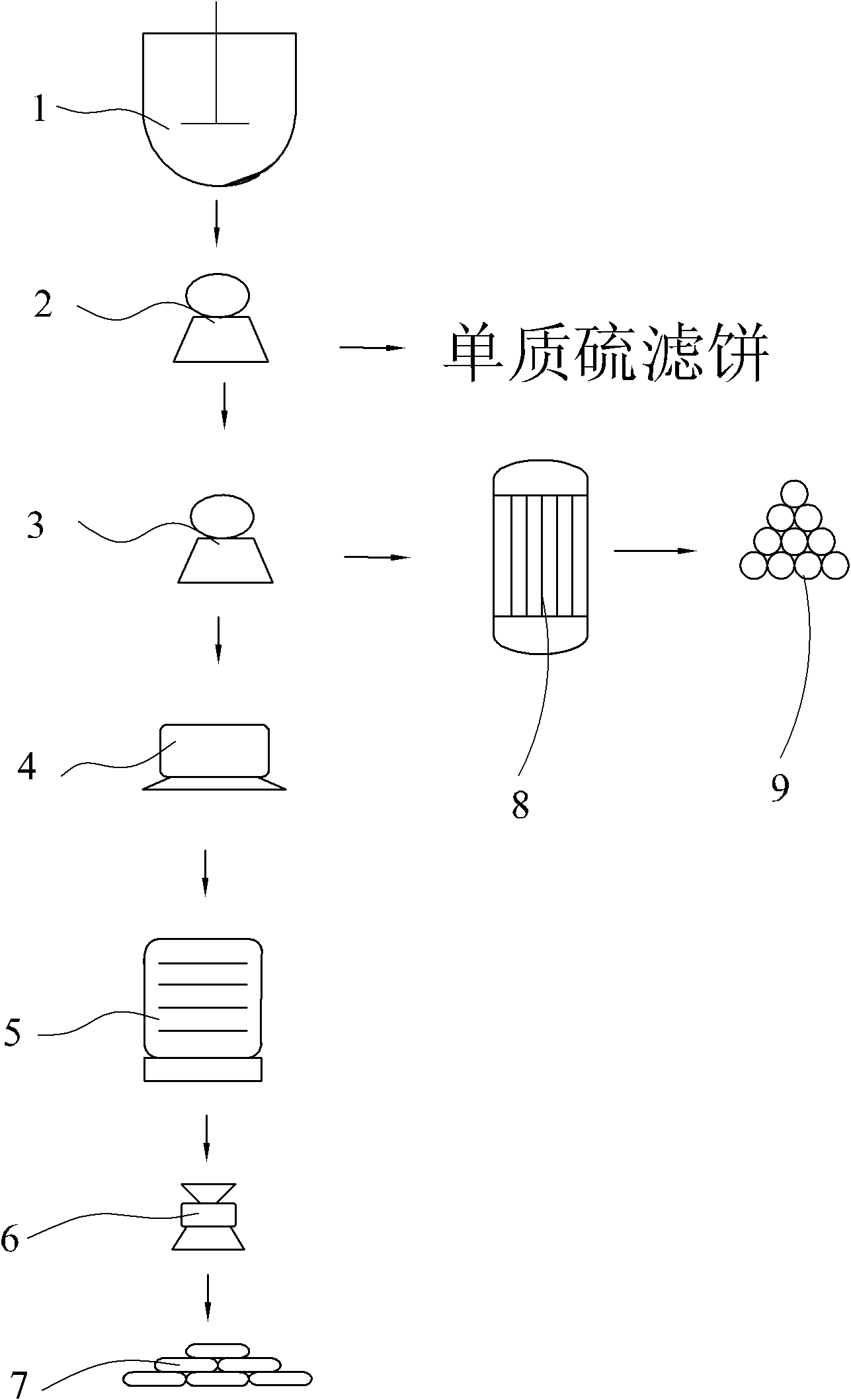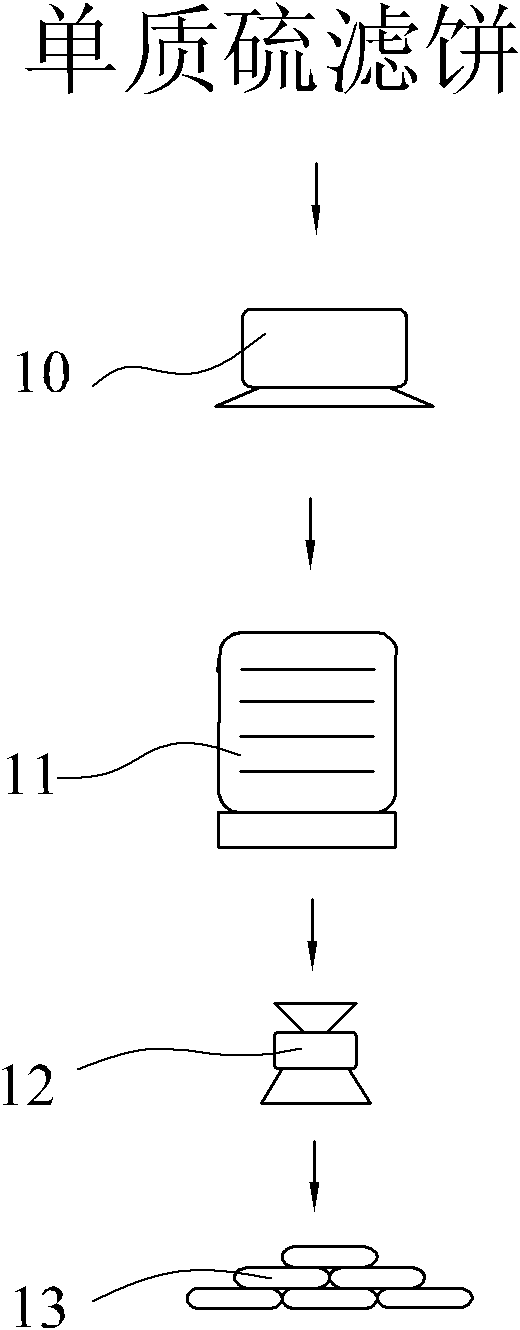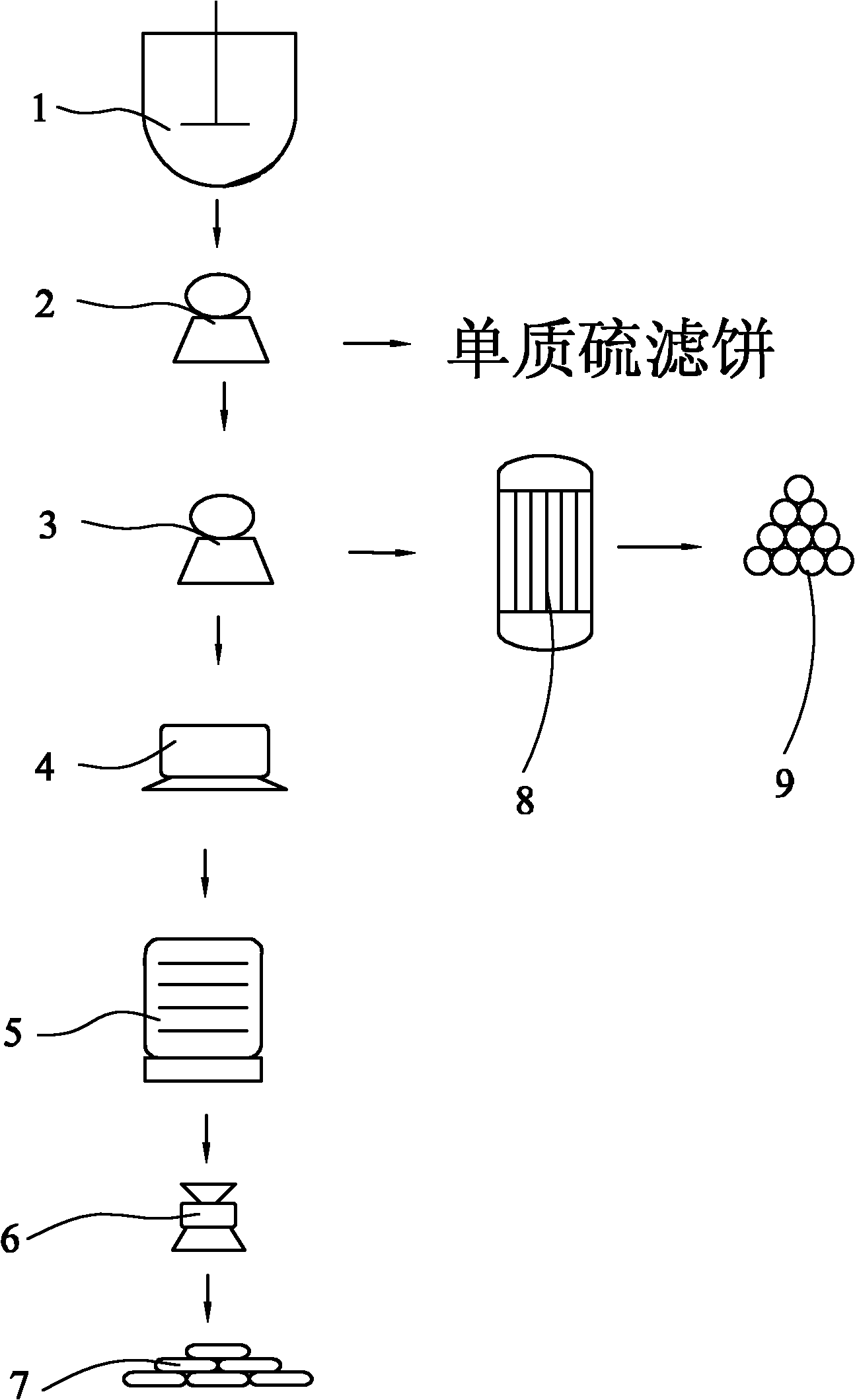Method for preparing lead hydroxide and silver chloride mixture with waste residues from production of lithopone
A technology of lead hydroxide and silver chloride, which is applied in the direction of lead hydroxide, etc., can solve the problems of no treatment and utilization methods, heavy metal pollution of the environment, waste of resources, etc., and is suitable for popularization and application, with few by-products and low equipment investment costs low effect
- Summary
- Abstract
- Description
- Claims
- Application Information
AI Technical Summary
Problems solved by technology
Method used
Image
Examples
Embodiment 1
[0022] refer to figure 1 , a method for preparing a mixture of lead hydroxide and silver chloride with lithopone gained waste residue, comprising the following specific steps: weighing 500 kg of lithopone gained waste residue, converted lead chloride content wherein is 173.15 kg, and its mole The content is: 529.51 moles, the content of silver chloride is 17.5kg, and it is ground into 80-120 mesh coarse powder, and put into the corrosion-resistant reactor one (1) together with sodium hydroxide, so that the chlorination in the corrosion-resistant reactor The mass ratio of lead and sodium hydroxide is 1:2, a chemical reaction occurs under gentle stirring to obtain a mixture containing lead hydroxide, sodium chloride, silver chloride and elemental sulfur; The mixture of sodium and elemental sulfur is coarsely filtered through filter one (2) to obtain microemulsion and elemental sulfur filter cake; the elemental sulfur filter cake enters another process for further processing to o...
Embodiment 2
[0026] refer to figure 1 , a method for preparing a mixture of lead hydroxide and silver chloride with lithopone gained waste residue, comprising the following specific steps: weighing 500 kg of lithopone gained waste residue, converted lead chloride content wherein is 173.15 kg, and its mole The content is: 529.51 moles, the content of silver chloride is 17.5kg, and it is ground into 80-120 mesh coarse powder, and put into the corrosion-resistant reactor one (1) together with sodium hydroxide, so that the chlorination in the corrosion-resistant reactor The mass ratio of lead and sodium hydroxide is 1:2.5, and a chemical reaction occurs under gentle stirring to obtain a mixture containing lead hydroxide, sodium chloride, silver chloride and elemental sulfur; The mixture of sodium and elemental sulfur is coarsely filtered through filter one (2) to obtain microemulsion and elemental sulfur filter cake; the elemental sulfur filter cake enters another process for further processin...
Embodiment 3
[0030] refer to figure 1, a method for preparing a mixture of lead hydroxide and silver chloride with lithopone gained waste residue, comprising the following specific steps: weighing 500 kg of lithopone gained waste residue, converted lead chloride content wherein is 173.15 kg, and its mole The content is: 529.51 moles, the content of silver chloride is 17.5kg, and it is ground into 80-120 mesh coarse powder, and put into the corrosion-resistant reactor one (1) together with sodium hydroxide, so that the chlorination in the corrosion-resistant reactor The mass ratio of lead and sodium hydroxide is 1:1.5, and a chemical reaction occurs under gentle stirring to obtain a mixture containing lead hydroxide, sodium chloride, silver chloride and elemental sulfur; The mixture of sodium and elemental sulfur is coarsely filtered through filter one (2) to obtain microemulsion and elemental sulfur filter cake; the elemental sulfur filter cake enters another process for further processing...
PUM
 Login to View More
Login to View More Abstract
Description
Claims
Application Information
 Login to View More
Login to View More - R&D
- Intellectual Property
- Life Sciences
- Materials
- Tech Scout
- Unparalleled Data Quality
- Higher Quality Content
- 60% Fewer Hallucinations
Browse by: Latest US Patents, China's latest patents, Technical Efficacy Thesaurus, Application Domain, Technology Topic, Popular Technical Reports.
© 2025 PatSnap. All rights reserved.Legal|Privacy policy|Modern Slavery Act Transparency Statement|Sitemap|About US| Contact US: help@patsnap.com



